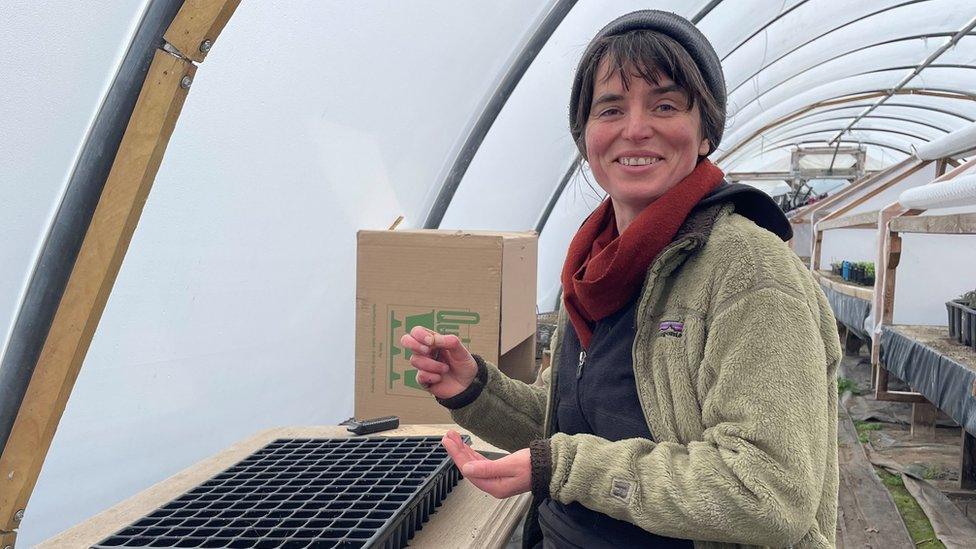Cost of living: Wales' agricultural shows under threat
- Published
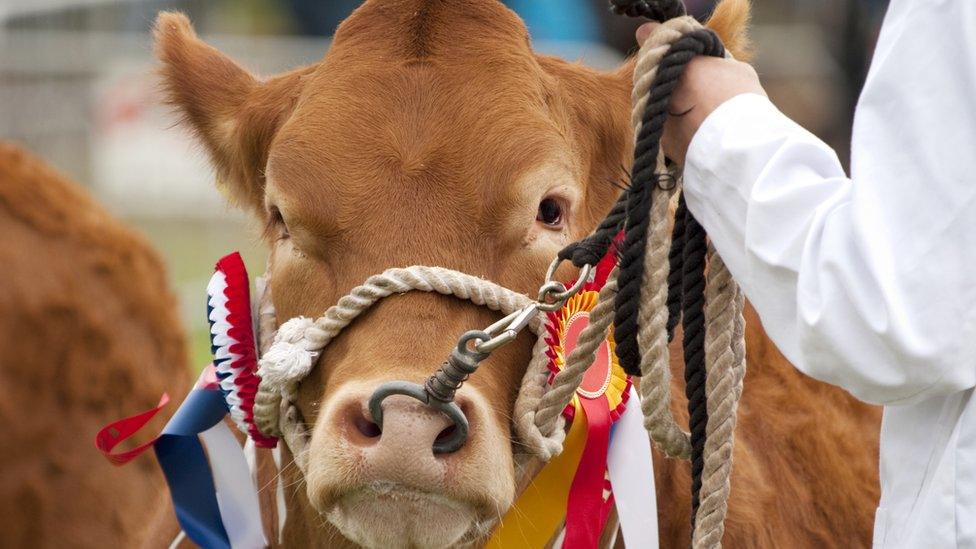
Covid had a dramatic affect on the number of people able to attend agricultural shows
Rising costs and fewer competitors mean agricultural shows face an "incredibly challenging" season, organisers have warned.
Several events have pleaded for public support due to a shortage of marquees, toilets and catering facilities.
The Royal Welsh Show, Europe's largest agricultural event, is having to make cuts to its programme to save money.
Wales is thought to host more than 150 agricultural shows - large and small - every year.
Mared Rand Jones of the Association of Show and Agricultural Organisations (ASAO) called them "the heart of our communities".
She said shows were responsible for "showcasing the best produce we have in Wales and educating the public about where their food comes from".
But recent years have been "tough", with attempts to revive the events following cancellations enforced by the Covid pandemic now hampered by the state of the economy.
The season starts on Monday, with Nefyn Show in Gwynedd celebrating its 125th anniversary.

Mared Rand Jones said "costs have also gone up - a lot"
Meanwhile, preparations are well under way for the Aberystwyth and Ceredigion County Show in June.
Chairman Emlyn Jones said there were "a lot of things to fight against" such as regular sponsors withdrawing their support and competitors dropping out.
Last year saw 20% fewer entries in its sheep and cattle competitions and 30% for horses, with Mr Jones saying "costs have increased and their habits have changed" since Covid.
Aled Rhys Jones, chief executive of the Royal Welsh Agricultural Society and author of a report for the Welsh government on the challenges faced by the sector during Covid, said 2023 would mark the first time some shows would be back at full capacity.
He said many aspects of infrastructure were "costing a huge amount more" than 2019.
"That's causing some very real pain financially and there's limited choice out there, not as many contractors and companies providing the goods and services we need as there were in the past," he added.

Emlyn Jones warned it was a "use it or lose it" situation for the future of agricultural shows
This is his first year in charge of organising what is considered to be the pinnacle of the agricultural show season in Wales - the Royal Welsh Show, a four-day event in late July attracting 250,000 people.
"As a charity we're very careful in the way we spend our money and have had to conduct quite a thorough analysis and review of our budgets bearing in mind the increase in cost structures," he said.
These include areas such as hospitality, catering and the number of complimentary tickets - while the show's horticulture marquee has been dropped entirely.
At £45,000, showcasing fruit, vegetables, flowers and plants was "a cost we couldn't bear this year, regrettably", Mr Jones said.
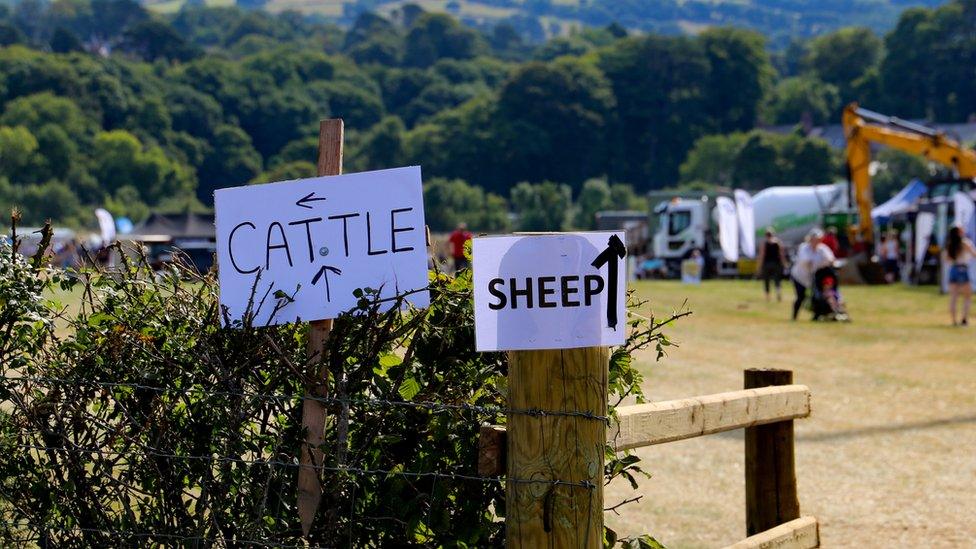
Aled Rhys Jones said: "Events need people and people need events like agricultural shows"
He added that, by trying to be open about the challenges facing the Royal Welsh Show, he hoped to head off complaints about ticket prices.
"So we've got to be honest I think and when people understand (the costs involved) they're more willing to come along with us.
"Government support through the pandemic was fundamental to keep societies like this going but what we need now is the support of people who see the value of coming here and the charitable benefit of what we're doing to support and promote agriculture."

COFIWCH DRYWERYN: A new podcast explores a dark and controversial chapter in Welsh history
HEART VALLEY: A day in the life of a curious Welsh shepherd

Related topics
- Published27 January 2021
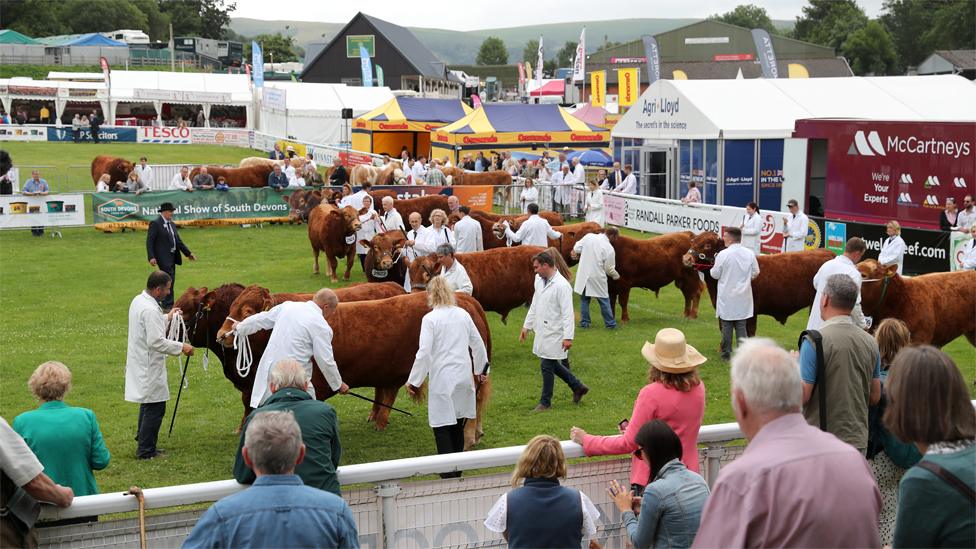
- Published18 July 2022
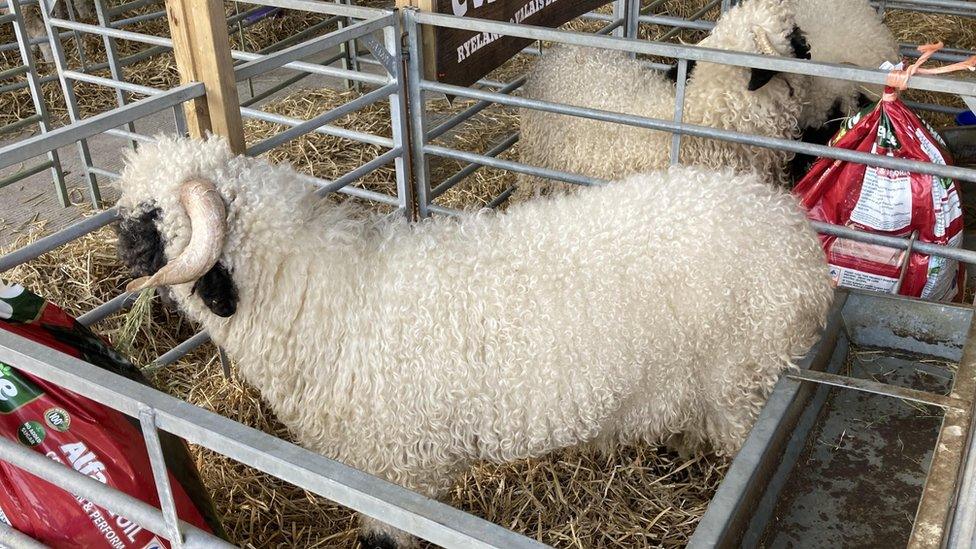
- Published7 February 2023
